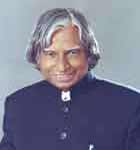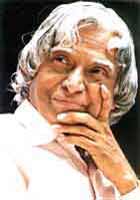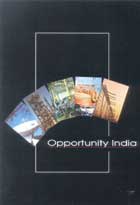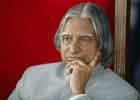First P.N. Haksar Memorial lecture by Dr. APJ Abdul Kalam
Introduction
I am indeed delighted to give the First PN Haksar Memorial lecture.
Despite his great stature in the national scene, I was fortunate to
come in contact with him when he was a member of the space commission
and visited the satellite launch vehicle integration lab at Thumba,
where multiple systems were getting integrated and prepared for
launch acceptance. At that time he was the Principal Secretary to
Prime Minister. With smoke coming out of his pipe, and with a smiling
face, he asked an important question: In satellite launch vehicle
programme where does India stand ? I looked at Prof. Satish Dhawan,
the then Chairman, ISRO and then quickly responded to him saying
that when the Rohini Satellite in injected SLV-III in earth orbit,
we will be the 5th country ! Oh' my Nation when you will be the
first" ?. His words - "when my nation will be the first" reverberates
in my mind even after nearly 20 years. When we launched AGNI missile
system in 1989 again we were the 4th country to have perfected
re-entry technology. When we conducted the nuclear tests and declared
India a nuclear weapon state, India was the 6th country. How do we
come out from this 4th, 5th, 6th, country syndrome, to the dream of
Shri PN Haksar of India becoming the first country in certain
technology areas.The concepts and doctrines for the welfare of the nation can be generated by a few thinkers and scholars. What is needed is who can translate this concept and ideas into action to produce results. Shri Haksar in the book "A Basket of Fallen Leaves" has brought out this concept beautifully. He says " As Mahatma Gandhi astutely observed , no cause can triumph unless there are faithful agents to carry it through. The assembling together of such faithful agents articulating the urges for social, economic and political transformation is the major issue before our country". This statement of Shri Haksar is true for technology, political field, industry and societal upliftment. So it is a honour to remember this great son of India and give this memorial lecture. The triggering thoughts of Shri Haksar on the need for faithful agents led me to think `When my country will become a "Developed Nation".? Hence the Topic for today's talk is "DEVELOPED NATION: THE VISION".
Technological Thrust
During the days of cold war, a predictable state of bi-polar world
order was getting established with the UN forum providing the necessary
platform for maintaining a sense of balance between the nations of the
world. The discriminatory or restrictive laws of the western block of
developed nations seemed justified on the basis of denial of technology
to the specific nation. However, after the collapse of the Soviet Union,
this east-west axis has taken a north-south orientation and the export
controls and technology denial regimes now are directed mainly to the
developing nations including India, to maintain the technoeconomic
superiority of the advanced countries, with political tone.Today, we encounter twin problems. On one side, there is a large-scale strengthening of our neighbours through supply of arms and clandestine support to their nuclear and missile programmes, and on the other side all efforts are being made to weaken our indigenous technology growth through control regimes and dumping of low-tech systems, accompanied with high commercial pitch in critical areas. I always wonder at the logic of technology control regimes and how the world can silently witness and accept such a logic. Some countries can develop, stockpile and even proliferate, but we should not develop anything even for our defence. They can have weapons and carriers because they already have weapons and the others should not think of them, even when their security and sovereignity is threatened.
Growth of indigenous technology and self-reliance are the only answer to the problem. Technology not only leads to advanced systems and products, but also is the main engine for economic build-up and national development. A club of G-8 has emanated among themselves. The western industrially developed countries, therefore, set themselves on a path of accelerated techno-economic development. Therefore, in the present global scenario only strength respects strength. There is no doubt, indigenous technology development is the only key for India to attain fast economic strength. The need of the hour is technological excellence and self-reliance.
We have been able to overcome the technology controls and design and develop our own system. We have been able to develop core competence in many strategic areas like the space, missiles, nuclear technology, supercomputers and many such areas. We have been able to demonstrate our capability in several high technology systems. Nuclear tests, AGNI missiles, what India can learn from this, beyond technological accomplishments. These developments show our "will" to be strong and self-sufficient to be independent from the fear of external threat and aggression to be able to have the freedom of deciding our own destiny and foreign policy without being dictated.
The urgent issue that we need to address collectively as a nation is how do we handle the tactics of economic and military dominance in this new form. Today technology is the main driver of economic development at the international. Therefore, we have to develop indigenous technologies to enhance our competitive edge and to generate national wealth in all segments of economy. Therefore, the need of the hour is arm India with technology.
Let us now explore how to arm India with technology not only for the purposes of defence and internal security, but also for food security, economic and social security of the nation and people. The vision for the nation is to transform India into a developed country within two decades.
Vision for the Nation
First Vision : India's freedom
India laid the seeding of independence in 1857. Freedom movement was
the first vision for the nation. It took 90 years to get the freedom
using multiple methodologies to vacate foreign powers. The vision
generated leaders across the political spectrum, many scientific
leaders, industrial leaders, literary giants, great economists and
several accomplished persons. In science and technology area a
remarkable event took place during 1920-25 in India. Internationally
well known scientists were enriching the nation. They were Professors
JC Bose, CV Raman, Meghnad Saha, Srinivasa Ramanujam and Subramanyam
Chandrasekhar. In the book "CHANDRA", Prof. Subramanyam Chandrasekhar.
describes "I mean it is a remarkable thing that in the modern era
before 1910, there were no (Indian) scientists of international
reputation or standing. Between 1920 and 1925, we had suddenly five
or six internationally well known men. I myself have associated this
remarkable phenomenon with the need for self-expression, which become
a dominant motive among the young during the national movement. It
was a part of the national movement to assert oneself. India was a
subject country, but in the sciences, in the arts, particularly in
science, we could show the west in their own realm that we were
equal to them."Independent India was born in 1947 with a label attached that it is a "developing country" pointing the fact that it is not economically strong; there is a high dependence still for defence systems. India has no world standing among the nations, inspite of its size and potential. Therefore, the question arises as to how we physically and spiritually remove this label of 'developing country' and become a 'developed India' in two decades of time. Independence was the first vision realized by the nation and its people. On that foundation we need to build the second vision of becoming a developed India with national, economic, food and social security.
Developed India - How to realise?
With this vision of Developed India let us look at what we should do
to reach that status. It is a second major movement for the country
after the great independence movement.In a movement everybody has a role. Form the TIFAC document Technology Vision 2020, five thrust areas around which we can take several econo-technological actions involved in such a movement:
- Agriculture and food processing;
- Reliable and quality electric power for all parts of the country;
- Education and healthcare;
- Information Technology; and<
- Strategic sectors.
-
These five areas are closely inter-related and lead to national
security, food security and economic security.
Integrated action
I wish to suggest how each and every Indian, in different walks of
life, can contribute towards realizing the vision for the nation.
I had discussions with economists, agricultural experts,
technologists from different fields, from industry, government,
administrators at various levels, non - governmental professionals
and activists, media persons, and political leaders at different fora.
After discussions, I feel concerted efforts in the five areas
mentioned earlier can lead to a major movement towards transformation
of the nation.Agriculture and food processing
India should have a mission to achieve a production of a minimum of
360 million tons of foodgrains in two decades. This will allow for
good domestic consumption and still leave a sufficient margin for
food exports and aid to other countries. This mission will demand a
great revolution in research, technology development, agricultural
extension services, and above all a major network of marketing,
storage and distribution.Electric power
This is the most important part of the infrastructure. Besides
assuring people of domestic comfort, it is imperative for increasing
food production, and to support a whole host of manufacturing
operations, in the engineering, chemical and material processing
industries, as well as in the smooth operation of the entire transport,
communications and information sector, all of which are vital to
economic growth and employment. The growth of a nation's GDP is vitally
linked to the availability of electric power. India's installed power
capacity today is about 85000 MW. Only about 32000 MW reaches the
consumer. There is shortage of about 15 per cent in the peak power
requirement. The requirement of electric power will only multiply
because of the growth in the demand from various sectors. Immediate
action is needed to greatly step-up the generation of electricity
from coal, gas, hydro, nuclear and non-conventional energy sources.
Research on non-conventional and nuclear sources of energy has to be
enhanced, for the reason the fossile fuels may exhaust in a few decades
as predicted by experts.Apart from generation of power, another major mission is to ensure its efficient transmission. The consumer is interested in the actual quality of power that is available, and not in the statistics of the installed capacity of generation. Here the technologies and systems management for countrywide distribution is of crucial importance.
Consumers too have to be careful. Precious power should not be wasted by inefficient equipment, fans, lights or other industrial and domestic appliances or agricultural equipment. Therefore, technologies for energy-efficient and use appliances are of crucial importance to India.
Education and health
Kuppu and Karuppan in our book "India 2020: Vision for the New
Millennium" as mentioned earlier in my talk, represent about 6o% of
India's population. These two have the urge and the willingness to
work hard. But because of the lack of education they are unable to
utilize the available opportunities for better employment or to
improve their standard of living. People like Kuppu and Karuppan have
to break out of their educational handicap. The lack of educational
opportunities and their poor quality of life perpetuates their
poverty. Educated parents will never like to have uneducated children,
as their future generation. Is it not true? Non-availability of
preventive health care further weakens their bodies and, therefore,
their capabilities. Can we break this vicious circle?Prof Indiresan, who led the TIFAC (Technology Information, Forecasting and Assessment Council) panel to identify the driving forces and impedances, has tried to point the way out. Indians should be provided access to first-rate education and skill development opportunities. This cannot be done by the prevalent methods of village schools or other schools and institutes in towns and cities. We need to create clusters of villages with excellent internal connectivity through roads and communications which are also linked to near by urban centres. These rural clusters would have quality centres of education, and health support facilities. People can easily commute between the villages and acquire the best skills and education. Their access to well-equipped health care centres will be the necessity. These centres would have the knowledge base to advise them on preventive health care methods. The teachers or medical personnel in these quality centers would also have access to other experts in India and even abroad through communication connectivity. Let us not forget India's excellent achievements in satellite communications. Besides technological expertise, what is required is good political and managerial leadership all over the country to implement this mission. Let not the children and grandchildren or Kuppus and Karuppans be handicapped. We can achieve an India without such handicaps by 2020.
Information Technology
In the "Technology Vision" document, software engineering and
associated IT products and services are important core competencies.
Fortunately, already a decision has been taken at the national level
to make India an information technology power in about a decade. When
this task force of IT is deliberating its final report, two important
items are essential to be considered by them for special action. All of
us feel that India has the intellectual power for higher levels of
software. High level software provides a challenge to our best minds
and at the same time it is a wealth generator. This should be focused
upon as a mission area in IT. If the necessary enabling conditions are
provided, this single area can transform out IT, electronics and
manufacturing sector into a major economic entity. Another item relates
to actions for the spread of IT applications countrywide for purposes
ranging from boosting business to spreading knowledge about fundamental
rights and responsibilities, impart skills, to provide preventive
health care information and for several such items pertaining to
acquiring a better standard of living. It can be a vary useful tool
for transmission of education to even the remotest parts of our
country. India's system of education and skill-generation can be
transformed in a decade if we can creatively and purposefully deploy
IT technologies.Strategic Sectors
To reach the status of a developed India, in addition to the four
mega-missions mentioned before, there is an equally important mission
for national security. In today's environment, national security is
derived from the technological strength of the nation; that alone
will give us the real strength. It is India's experience, be it in
agriculture or in the areas of the nuclear space and defence research,
that when visionaries set a mission, results are achieved. This
strength is to be further expanded with the creation of a few major
industries in aerospace, advanced electronics, advanced sensors and
advanced materials. These industries should operate in a market-driven
environment winning global markets. For example, India should be in
the business of building small passenger jets even with an
international consortium. Likewise, we should be in the business of
selling satellites and providing commercial launch services. Marketing
of aerospace systems, providing aircraft sub-systems, maintenance services
to global customers, as well as business in products with advanced sensors
and advanced materials, should become a part of our normal business. We
should also begin aggressive marketing of various defence systems such
as main battle tank, guns, LCA type aircraft, certain types of missiles
and nuclear power stations. The thrust towards self-reliance should be
coupled with global marketing, as the developed world force upon us. Such
an approach should become the focus in the strategic sector. In this
direction, the Ministry of Defence has a self-reliance mission of
realising 70 per cent indigenous defence systems by 2005, from the
present 30 per cent. To achieve this target, the defence R&D and
production infrastructure are already geared up and the partnership of
Indian corporate sector has been sought to accomplish this major task.
Similarly, other departments having technologies to establish major
industries which serve the multiple needs of domestic and global markets.
Every department of Government of India must be mandated to dual use
technologies, which is a pre-requisites of protect these hard-earned
wealth.Implementation
My suggestions for these major five missions, do not envisage the
present methods of departmental implementation or expanding the
governmental structures, In order that India marches towards the
cherished goal of a developed nation, there is an urgent need to
change the present methods of working and the mindset that has
developed because of centralized managerial system. Many existing
government structures would need to be drastically reduced. There
should be reduction of monopolies and a greater competition in the
implementation of many packages of these mega-missions. Therfore,
private sector participation would be required along with more
liberal and simplified procedures. healthy competition leads to
greater efficiency and innovation. Empowerment of implementing
teams would lead to speed in action and enhance capability to take
risks. Wherever there is a government presence, its mode of operation
should be made a facilitating one and the public accountability
systems should be changed accordingly.I believe, that the five mega-missions when integrated and implemented with a national focus, will result in actions which will shape the second vision of the nation. The necessary financial, managerial and human resources would flow from those whose minds are ignited, including those in the government and industrial sectors.
The vision for a developed India is driven fully be economic development coupled with security needs of the nation. It is also important that the intellectuals of the nation is equally reinforce. What it means is India due to its ancient civilization, inspite of over-powering from various invading nations, the intellectual wisdom needs to be sprung back matched with Indian value system. The intellectuals' mighty minds built-in self-confidence with compassing for the service to poorer section and the most important demand for a developed nation-happy society.
Self-Reliance in Technology and National Strength
I would like to share with you certain experiences, I had the occasion
to participate and understand. This happened in a year's period. On
11th May 98 the Chairman, Atomic Energy Commission, Dr. R Chidambaram
and myself and some of our team members were working for the results
of the underground nuclear test followed by another two. We were very
close to the test site and countdown was progressing. At T-5 seconds and
hundreds of parameters for instrumentation were displayed. The mission
was to takeplace in a few seconds. At T-O the event. We witnessed the
whole earth shrugged, thundered in front of us and all around. We saw
part of the earth raising. What a powerful energy India generated
through nuclear weapons? This successful mission was the great
partnership of DAE and DRDO. Self-reliant technology made the nation
to become a nuclear weapon state.The second event is to do with a missile system. On 11th April this year the AGNI-II took off with computer command from the beautiful island range. 600 parameters were monitored in real time through a series of radars and telemetry stations and ship borne instrumentations interlinked through our own communication satellites. The AGNI with its payload reached with close accuracy on the target 2000 kms away. The partnership of DRDO labs, academic institutions and industries brought this important success and it is triumph for self-reliance, inspite of the technology denial.
Another event is about India's rocket technology . It reached its prime when the ISRO launched successfully the operation Polar Satellite Launch Vehicle on 26 May,1999. The PSLV, that has the third largest booster in the world, and above all the ISRO reached a stage of integrating its own satellite IRS, a German and a South Korean satellite. India can compete in the launch vehicle programme for launching other countries, satellites also. This the result of a great visionary Prof Vikram Sarabhai on self-reliance.
Another area of India's core competence is the information technology. Within 5 years time our software product potential has increased from a few hundred million dollars to four billion dollar, more than half of which are exported. Some of our software companies have been recognized as equal professionals in various software export houses in the world. All these events, I am narrating to the young community because, if India decides and work for it we can do it.
When TIFAC brought out the Vision Document evolved by 500 experts and submitted in 1996, one major question often asked was the tasks are bigger and people are not to the same dimension. The nation is still not prepared how such a vision of developed India can be accomplished. In my lecture I was presenting our national core-competence and also wherever we decided we can, India will do it and India has done it. For the realisation of the Vision two important factors have to enter into our psyche and minds. They are: the self-reliance in thinking and actions and a national decision that India should become a developed nation.
Concluding Remarks
Few dream and many transform it into thoughts and thoughts have be
transformed into actions. I would like to tell particularly to the
young audience of this gathering, the vision is bigger than us. The
developed India needs a revolution in the minds of the young. Enter
into it. Ignited minds are indeed the powerful resource to transform
this nation from the developing nation of 50 years into a developed
nation in less than two decades times. Technology is the prime mover
for the vision for the nation.








